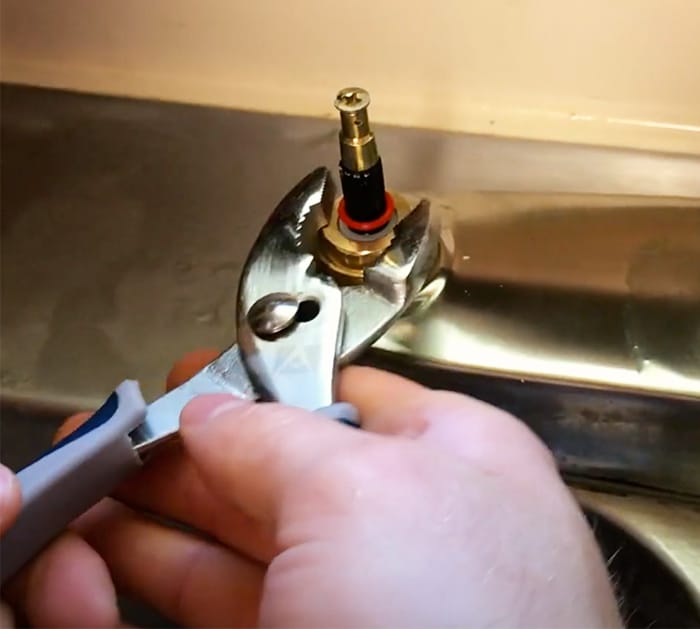Which It's Essential to Fix a Malfunctioning Faucet
Which It's Essential to Fix a Malfunctioning Faucet
Blog Article
We have stumbled on this post on Should I Repair or Replace a Leaky Faucet? down the page on the web and felt it made good sense to talk about it with you on this site.

Dripping faucets might look like a small trouble, yet their influence surpasses simply the aggravation of the audio. From drainage to sustaining unneeded economic prices and health risks, ignoring a trickling tap can cause different repercussions. In this short article, we'll delve into why it's essential to resolve this usual family issue promptly and properly.
Wastefulness of Water
Environmental Effect
Dripping taps contribute significantly to water wastefulness. According to the Environmental Protection Agency (EPA), a solitary faucet dripping at one drip per secondly can waste greater than 3,000 gallons of water per year. This not just strains water sources but likewise influences ecosystems and wildlife depending on them.
Step-by-Step Guide to Taking Care Of a Dripping Faucet
Tools Called for
Prior to attempting to take care of a dripping faucet, gather the essential tools, including a flexible wrench, screwdrivers, substitute components (such as washers or cartridges), and plumber's tape.
Common Tap Issues and Their Solutions
Determine the kind of faucet and the particular issue causing the drip. Common issues consist of damaged washers, corroded valve seats, or damaged O-rings. Describe producer directions or on the internet tutorials for detailed support on fixings.
Financial Expenses
Boosted Water Expenses
Beyond the environmental impact, dripping faucets can inflate water bills considerably. The gathered wastefulness with time equates into higher energy expenses, which can have been stayed clear of with timely repair work.
Potential Residential Or Commercial Property Damage
In addition, extended dripping can cause damage to components and surfaces bordering the tap. Water accumulation can cause discoloration, corrosion, and also architectural problems if left neglected, resulting in extra repair expenses.
Wellness Concerns
Mold And Mildew and Mold Growth
The continuous visibility of dampness from a dripping faucet produces an excellent environment for mold and mildew development. These fungis not just endanger interior air quality but also position health and wellness threats, specifically for people with respiratory system conditions or allergies.
Waterborne Illness
Stagnant water in dripping faucets can become a breeding ground for bacteria and various other virus, boosting the danger of waterborne illness. Contaminants such as Legionella bacteria grow in stationary water, potentially leading to serious illnesses when consumed or breathed in.
DIY vs. Specialist Repair service
Benefits and drawbacks of DIY Repair
While some might attempt to deal with a leaking tap themselves, DIY fixings include their very own set of obstacles. Without correct knowledge and tools, do it yourself efforts can exacerbate the issue or cause incomplete fixings, prolonging the issue.
Advantages of Hiring an Expert Plumber
Working with a professional plumber makes sure that the underlying source of the dripping faucet is resolved properly. Plumbing technicians have the expertise and equipment to identify and repair faucet problems effectively, conserving time and lessening the danger of additional damages.
Environmental Obligation
Private Contribution to Conservation
Taking responsibility for taking care of leaking faucets aligns with broader initiatives towards water conservation and environmental sustainability. Every person's activities collectively make a significant influence on maintaining valuable resources.
Lasting Living Practices
By prioritizing prompt fixings and taking on water-saving practices, individuals add to sustainable living techniques that benefit both existing and future generations.
Preventive Measures
Normal Maintenance Tips
To stop dripping taps, perform regular maintenance such as cleaning up aerators, examining for leakages, and replacing worn-out components promptly. Furthermore, take into consideration installing water-saving gadgets or updating to much more effective components.
Importance of Prompt Repair Works
Resolving trickling faucets as soon as they're observed stops additional water wastefulness and possible damages, ultimately saving both water and money in the long run.
Impact on Residential Property Worth
Assumption of Well-Maintained Building
Keeping a residential or commercial property in good condition, including dealing with maintenance concerns like trickling faucets, improves its viewed value and worth amongst prospective buyers or lessees.
Impact on Resale Value
Characteristics with properly maintained plumbing components, including taps, command higher resale worths in the realty market. Addressing trickling faucets can add to a favorable impression throughout residential or commercial property examinations and settlements.
Verdict
Dealing with a trickling faucet exceeds plain benefit; it's a crucial step toward preserving water, reducing financial expenses, and guarding wellness and property. Whether with DIY repairs or expert help, acting to fix trickling taps is a little yet impactful way to promote liable stewardship of sources and contribute to a healthier, extra lasting future.
How to Fix a Leaky Faucet: Step-by-Step Repair Guide
A leaky faucet may seem like a simple annoyance, but if it's not fixed promptly, that leak could cost hundreds to potentially thousands. From water damage to mold, mildew, and high water bills, even a tiny leak can be catastrophic if left unattended. Damage like this can even affect the overall value of your home, so it's important to take the right approach for leaky faucet repair. You may need the help of a plumber in some cases, but we've got a few tips you can try on how to fix a leaky faucet before calling the pros.
Four Faucet Types
When you're learning how to fix a leaky faucet, the first step is knowing what kind of faucet you're working with! There are four common types.
Cartridge Faucets
Cartridge faucets come in one- or two-handled varieties. In one-handled cartridge faucets, hot and cold water combines in a single cartridge. In the two-handled versions, hot and cold water are controlled separately and mixed in the faucet.
Ball Faucets
Ball faucets have a single lever you push up and down to adjust the pressure and rotate to change the temperature. A slotted metal ball controls the amount of water allowed into the spout.
Compression Washer Faucets
They're the oldest type of faucet, but they're still used in many homes — especially older ones. Compression faucets have two separate handles that, when turned, raise or lower the washer that seals a water valve. This valve stops water from flowing through the faucet when it is turned off.
Disc Faucets
Disc faucets rarely need to be repaired due to their maintenance-free design. The water flow is controlled by two discs — the upper one raises and lowers against a fixed lower disc, creating a watertight seal. If your disc faucet starts leaking, you may need to replace the seals or clean residue buildup from the inlets.
Fixing a Leaky Faucet
Step 1: Turn Off the Water
Whether you're learning how to fix a leaky bathtub faucet or how to fix a leaky kitchen faucet, always turn off the water supply to your working area when you're fixing a leak. The last thing you want is a flood added to your list of things to fix.
Look for the shutoff valves below your sink or around the tub and turn them clockwise to stop the water flow. If your faucet doesn't have shutoff valves, you may need to turn off the water for the whole house. Check to make sure it's off by turning the faucet on. If nothing comes out, you're ready to start the repair.
Step 2: Take Apart the Faucet
How you disassemble your faucet depends on the type of fixture you have. You can use a flathead screwdriver to remove the caps on top of the handle or handles for cartridge and compression faucets. Inside, you should see handle screws. Unscrew these with a screwdriver to remove the handle.
Disc- and ball-style faucets will typically have an inlet screw near the handle, and removing that will reveal the interior of the faucet.
Detach the Valve Stem
For cartridge- and compression-style faucets, you'll see the inner valve stem or cartridge once you remove the faucet handles. If you have a compression faucet, unscrew the brass valve stem. If you have a cartridge faucet, pull out the cartridge. If your cartridge has been in place for a while, it may require some tools or extra force to remove it due to mineral deposits.
Examine and Replace Parts
Once you've removed the parts, check them out to confirm what needs to be replaced. You may see corroded rubber washers, O-rings, stems, or cartridges. On a ball-style faucet, check the seats and springs for damage.
If you need to repair a leaky disc faucet, check the inlet and seals on the lower disc.
Once you determine what parts must be replaced, visit your local hardware store. Bring the damaged parts with you to ensure you can purchase the correct components to replace them.
Clean Valves and Faucet Cavity
If you've removed a stem or cartridge, you may notice mineral buildup in the faucet's threads. Use white vinegar to clean the valve seat by soaking it for a few minutes, then scrub it away with a soft toothbrush and rinse with warm water. You can also clean the interior of the faucet in the same way.
Reassemble the Faucet
Once your faucet is cleaned and the required parts have been replaced, it's time to reassemble it. Put the pieces back together and slowly turn the water supply back on. Doing this slowly is crucial because too much initial water pressure can damage the new hardware you've just installed.
https://homewarranty.firstam.com/blog/how-to-fix-leaky-faucet

I'm certainly very fascinated by Should I Repair or Replace a Leaky Faucet? and I'm hoping you appreciated the entire blog posting. Sharing is nice. Helping people is fun. Thank you for your time. Don't forget to check our blog back soon.
Report this page